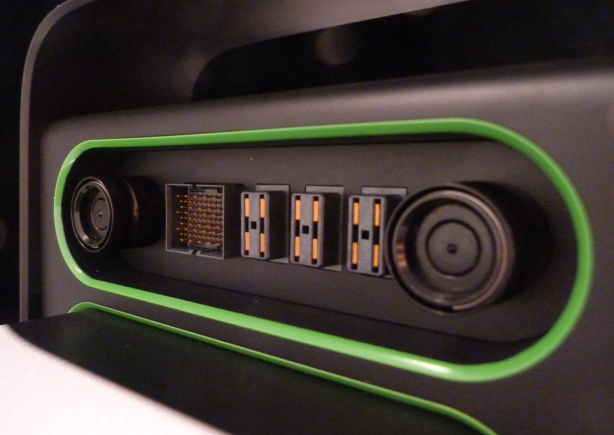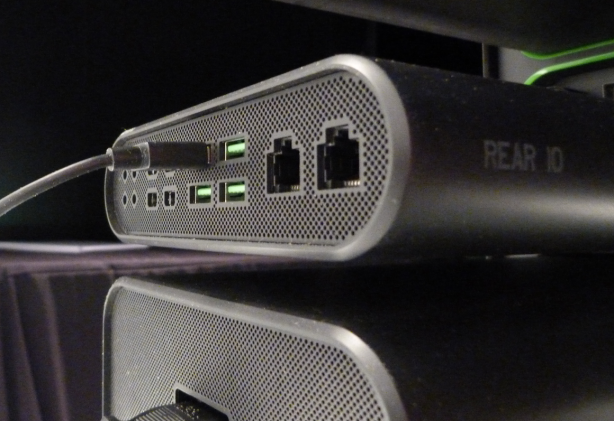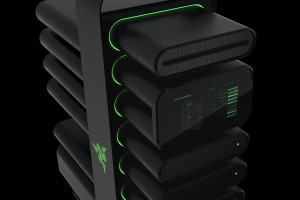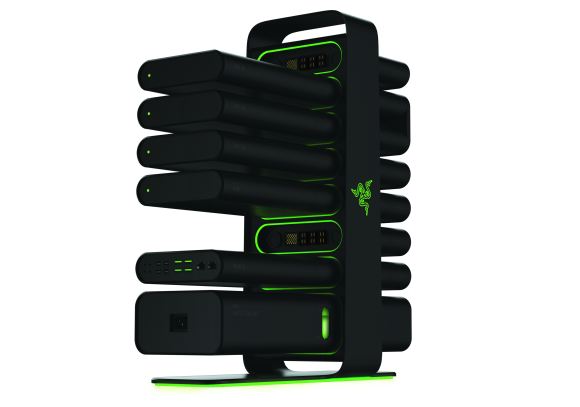I’m gonna pick up the pieces and build a Lego House…
…an incredibly modular desktop computer that allows users to easily swap in new components with minimal computer knowledge? And it’s designed by Razer?
Razer’s calling it Project Christine, and promises to open up the full power of PC hardware even to those with no technical knowledge.
Each of the branches on this industrial tree is a discrete component—a CPU, a GPU, a hard drive, memory—that simply plugs into the central backbone. Once slotted in, Project Christine automatically syncs the newly added module through the magic of PCI-Express (the same bus that discrete graphics cards currently use).
The current model is basically: “find the correct inputs and outputs for dozens of tiny components, snap them all together, and pray nothing breaks.”
“Need more graphics processing power or storage? Easy—a user can slot-in additional graphics modules and add more storage by either swapping-out the existing storage drives or adding more modules,” states Razer’s announcement.Project Christine is basically a very cool-looking rack into which gamers can slot any combination of modules including GPU, CPU, memory, and more, which will automatically sync.
 When you’re ready to upgrade, pull an old component out and put the new one in.
When you’re ready to upgrade, pull an old component out and put the new one in.
“Modules connected to the PCI-Express backbone can be added in any order or combination, featuring up to quad-SLI graphics, multiple SSD and RAID storage components, I/O and even power supplies, ensuring maximum flexibility,” Razers continues.
Each module plugs into a centrally-located liquid cooling system. Liquid cooling both keeps the system quiet (no more fan hum!) and, according to Razer, allows components to be factory overclocked without voiding warranties.
No need to wrangle cables. No scary “this motherboard is about to snap in half” moments when you need to replace your RAM.
 Components plug into these slots. The two circular protrusions hook into the central liquid cooling system.
Components plug into these slots. The two circular protrusions hook into the central liquid cooling system.
The modules could potentially be sold by Razer or third parties, but the company hasn’t planned that far. The computer can also run multiple operating systems.
And more importantly, no need to replace your entire system when you upgrade. Razer claims that as technology evolves, so will Project Christine’s modules. Upgrading your system will be as easy as removing the old module (say, your graphics card) and slotting the new one in. Seamless.
Razer pays lip-service to the openness of the PC platform in its announcement, but claims “only the most hardcore enthusiasts have been able to take advantage of this openness to build, customize, and continuously upgrade” due to the complexity of PC hardware.That’s undoubtedly true, but it remains to be seen whether a completely closed-off system like Project Christine is the correct answer.
Project Christine looks sleek, and the promise of perpetual upgrades is a beautiful fantasy, but this system only survives at Razer’s whim. If—when?—Razer stops putting out new hardware for Project Christine, you’re keeping whatever you’ve got.
And who knows what hardware Razer makes available? That’s the problem with this design—the beggars can’t be choosers philosophy.
Say the latest and greatest graphics card releases tomorrow, and I want to put it in my system—I can do that! I can swap in the new graphics card, install some drivers, and get right back to playing games and updating spreadsheets in high definition or whatever.
With Project Christine, you’re stuck waiting for Razer to make that card available.
Now, Razer claims this won’t be an issue. “The idea behind the concept is that users can customize what goes in it. When it is launched, users will have the ability to use the best GPU/CPU technology that is currently available,” said Young Bae, Global Project Manager of Systems at Razer in a statement provided to PCWorld. All we can do is take Razer at its word, though.
 These components are so specialized, you’re counting on Razer to provide support for the long term.
These components are so specialized, you’re counting on Razer to provide support for the long term.
If you’re the person who has never built a PC and will never build a PC (or if you’re coming from something even more closed down, like a Mac), that probably won’t matter. You’re probably not the type of person who’s worried about open versus closed systems, or snagging the latest components. You just want to own a powerful computer that’s easily upgradeable.
But if you are at all concerned with having control over your computer, you’d want to wait and see whether Project Christine is embraced by other hardware manufacturers—whether AMD and Nvidia release every card in a standard and Project Christine configuration, for instance—before you jump in.
And who knows—it’s just a concept, so it may never release in the first place. Still, it’s one of the most intriguing desktop ideas in a very long time.

